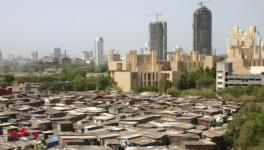UPSC: Why EWS Quota Denies SCs, STs and OBCs Their Due

Image Courtesy: The Print
A fortnight after the law granting a 10% quota to the Economically Weaker Sections (EWS) in Central government jobs and educational institutions was enacted last year, Prime Minister Narendra Modi assured a rally at Madurai that his policy of reservation will not undermine the interests of dalits, tribals and the Other Backward Classes (OBCs). Modi went on to describe the critics of the 10% quota as the “forces of negativity”, who he exhorted the youth to vanquish in the 2019 Lok Sabha elections.
On paper, the Prime Minister’s logic was impeccable – the 10% quota for EWS was, after all, not carved out of the 49.5% of jobs and educational seats reserved for the Scheduled Castes (15%), the Scheduled Tribes (7.5%) and the OBCs (27%). The 10% quota was hived out from the 50% of posts and seats in the general category, which are allocated through an open competition regardless of the caste identity of applicants.
But what seems logical on paper tends to unravel differently in reality.
This is as true of the 10% quota, which appears to have become a method of force-feeding members from socially advanced groups, particularly the upper castes, into the administrative system. The EWS quota is for those individuals among castes which were, until January 2019, outside the 49.5% reservation pool – and whose annual family income is Rs 8 lakh or less.
The Prime Minister’s logic appears to be unravelling because of the rule of recruitment, according to which, an OBC or SC or ST who meets the cut-off, or qualifying, marks for the general category, is assigned a post tagged as general, and not the one reserved.
Thus, for instance, an OBC who, say, tops an examination, will not take one of the posts reserved for OBCs; he or she will take one in the general category. The post due to him or her as an OBC will be filled only by those OBCs whose marks are below the qualifying grade for the general category – but equal or higher than that for OBCs.
This process of recruitment holds out the promise that SCs, STs and OBCs could be recruited for more than 49.5% of government jobs. How? Assume there are 100 posts reserved for OBCs. Assume that none of OBC examinees secure marks more than the qualifying grade for the general category. In that case, only 100 OBCs will get recruited. Now assume that 10 OBCs have secured more than the qualifying marks for the general category. In this case, 110 OBCs will get recruited, if a 100 of them have scored equal or higher than the qualifying marks for the OBC category.
A caveat is necessary here. Whether those in the reservation categories get hired for more than 49.5% of posts depends on how high the cut-off marks are for the general category. A larger pool of posts in the general category reduces competition and lowers the qualifying marks required to secure posts in this category.
This is precisely why the 10% quota for EWS militates against the interests of SCs, STs and OBCs. With 10% of government jobs taken out of the general category, the qualifying marks, ordinarily, would climb up – and make it a little more difficult for SCs, STs and OBCs to cross the threshold.
Conversely, since the 10% quota is for socially and educationally advanced groups, the new reservation policy, apart from overturning the fundamental principle of social justice by introducing the economic criterion, becomes a method of retaining their dominance over government posts. (It is wrong to say, as some have, that EWS is caste-blind or open to all.)
But this fact is rarely recognised because it has become the country’s common sense that the qualifying marks for the 10% EWS quota will almost always be far higher than those for other reservation categories – and quite close to that for the general category. It is, therefore, argued that the 10% quota for EWS is at the expense of the marginally less ‘meritorious’ among the higher castes. Why should those in other reservation categories be concerned?
Here then is the shocker: the cut-off for EWS, in several examinations for recruitment between January 2019 and now has been lower than those for different reservation categories.
For instance, see Table I, which lists cut-off marks for different reservation categories and the general category in the 2019 Civil Services Examination (CSE), the result of which was announced recently.
The CSE, through which are recruited cadres for the elite Indian Administrative Service and Indian Foreign Service and such like, has three stages – the preliminary or prelims, the main or written tests, and the final, for which marks secured by candidates at the second stage are added to what they are marked for in interviews.
Table 1: Civil Services Examination, 2019 – Minimum Qualifying Marks
At the final stage, the minimum qualifying marks for EWS were lower than that of OBCs, but higher than those for SCs and STs. At the second stage, however, the cut-off marks for EWS were lower than those for OBCs, SCs and STs. The maximum increase in the cut-off marks between the second and the final stage happened for EWS, perhaps suggesting that they are better equipped with inter-personal skills, arising out of their dominant cultural milieu.
Now revert to the imaginary example we cited earlier. Given that the final cut-off marks for OBCs are higher than that for EWS, it is very likely a certain number of OBCs at the lower end of the performance range would have made it through the general category but did not because of the 10% quota. This is because the 10% quota decreased seats in the general category and raised the threshold for entering it.
Their inclusion in the general category, in the absence of the 10%, would have freed slots for those in the OBC category who failed to make it through the CSE this year. In fact, at the second stage, the 10% quota must have certainly nixed the chances of some in OBC, SC and ST categories from entering the final round of the CSE, given that the cut-off for EWS is the lowest.
It does seem Modi’s 10% quota has come at a time when the OBCs, SCs and STs have been performing relatively better than, say, a decade or more ago. For instance, OBCs secured the top rank in the 2016 and 2017 CSE. This honour went to an SC in 2015.
These trends have had many OBC, SC and ST leaders to perceive the 10% quota as a ploy to reduce their entry into government and public sector jobs. Their suspicion has been heightened because cut-off marks for EWS have been lower than those for other reservation categories in other examinations.
Notably, the chief of the Dravida Munnetra Kazhagam (DMK), MK Stalin and Member of Parliament M. Kanimozhi, also from DMK, have raised their concerns on the issue. Further, in the case of another exam too – the State Bank of India junior associate (SBI-JA) preliminary examination results, the cutoff marks for EWS in Tamil Nadu was just 28.5, against 61.25 for SC and 53.75 for ST. The cutoff marks for both the general and OBC categories were the same – 61.25.
This was broadly the trend, with minor variations, in several other states – Madhya Pradesh, Chhattisgarh, Punjab and Maharashtra. This prompted the Twitterati to accuse the Bharatiya Janata Party of betraying the largest segment of Hindus for preserving the interests of the upper castes, which, as so many analysts have predicted, will dominate the EWS category. The charge acquires credence as senior posts in elite services remain theirs.
Christophe Jaffrelot and Kalaiyarasan A note that in 2013, the OBCs constituted 8.37% of Class A and 10.01% of Class B jobs in Central government services. The percentages have marginally risen from those levels subsequently. However, the marginal increase in percentage has been accompanied with a reduction in the number of posts. For instance, in the case of CSE, the number of vacancies has come down by 30%, from 1,291 in 2014 to 896 in 2019. Furthermore, the Modi government’s decision to allow lateral entry at the Joint Secretary level undercuts reservation.
It is, therefore, not surprising why many club the 10% quota with the controversy over the methodology of calculating the creamy layer and the government’s silence on the judicial verdict declaring that reservation in promotion is not a fundamental right, as proof of a concerted pushback against the assertion of subaltern groups.
Ajaz Ashraf is an independent journalist and Vignesh Karthik KR is a PhD student at the King’s India Institute, King’s College London.
Get the latest reports & analysis with people's perspective on Protests, movements & deep analytical videos, discussions of the current affairs in your Telegram app. Subscribe to NewsClick's Telegram channel & get Real-Time updates on stories, as they get published on our website.
























